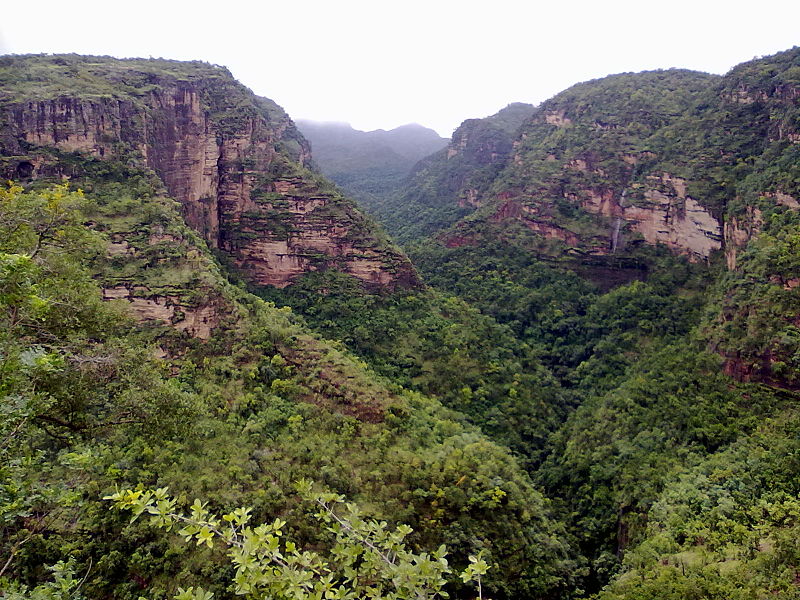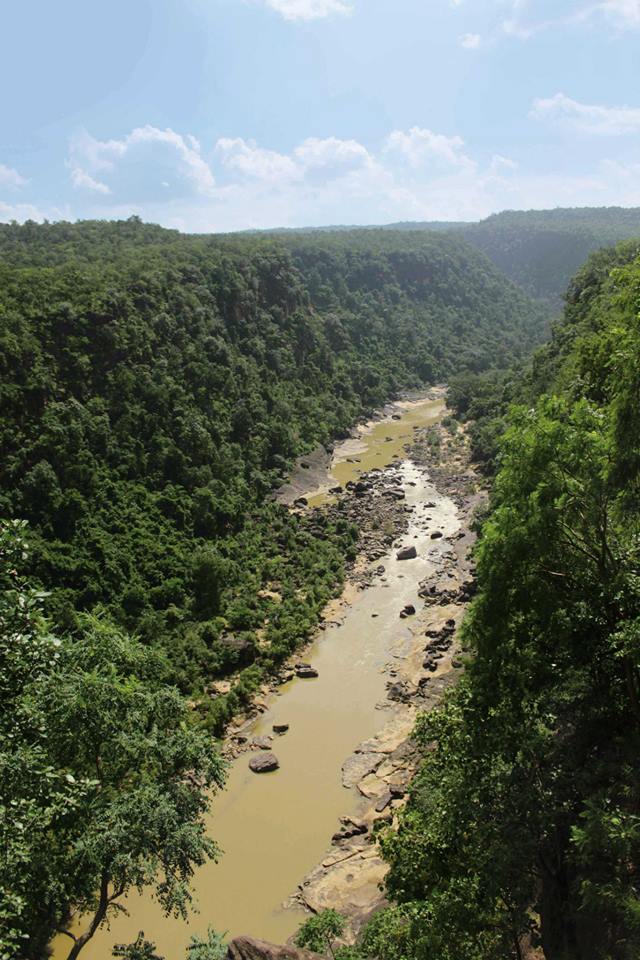Pachmarhi, Madhya Pradesh’s only hill station, offers scenic vistas, lovely waterfalls, a thrilling variety of avifauna and outdoor activities and adventure sports
Sitting petite at a height of 1,000 m Pachmarhi is the closest hill station for Bhopalis and is an easy access from the neighbouring states. The spectacle one gets to exult in at this time of the year here, is just marvellous. The majestic Satpura ranges transport you to a different time while taking a morning walk or just lazing around the lawns watching the hoodless Gypsys laden with boisterous youngsters with jarring Bollywood numbers. But as they quiten down, you fall back in time.
I have visited Pachmarhi many a time, but each season has been extraordinary. Some 10 years ago, I was privileged to stay at the Mahadeo Forest Resthouse that seems to be getting harder to stay at of late. having got a tiny break from the usual routine, I rounded up my family and landed up at the famous Bison Lodge. It is the first ever building constructed by James Forsyth here at Pachmarhi in 1862. It was here that Bori, the first reserve forest of India, was born.

The Bee Fall
Rich in waterfalls and vantage points, the Pachmarhi region was the kingdom of the Gond tribe king Bhawut Singh and became a hill station and sanatorium for British troops in the Central Provinces of India in the second half of the nineteenth century.
Considering that it is the perfect getaway for all class and kind, the MP Tourism department has provided amenities and accommodation for all kinds of travellers. That taken care of, the best thing is to roam and roam free. The Bee Fall were in full swing with children coming in from various schools from all over India and, I, for one, was there only to get my feet tickled by the tiny fish in the pool, waiting to nibble at your feet. Now who needs a Japanese spa!
After the clamour, it was siesta time though it was disrupted by monkeys frolicking on the tin roof. So, we drove up to Dhoopgarh just in time to catch a glimpse of the setting sun. Amidst the hullabaloo, we drew much consolation from the hot, fluffy, most delicious aloo vadas. Apart from the humdrum, Dhoopgarh offers magical moments at both sunrise and sunset.
You can easily catch a glimpse of the rare red mongoose or a sloth bear family sauntering about in search of grub. A herd of Indian bisons graze about gently but get alert as we drive past them. It’s the calm that you revel in here, watching the peaks being transformed into a painting.

Dhoopgarh (Photo by Abhayashok)
The slight chill brought about by sundown took us away from the highland to where a snug family time awaited. Nights here are totally for long walks and sitting about catching up on time lost. The long verandahs and courtyards are ideal to relax and listen to engrossing jungle tales narrated by the watchman.
Early the next morning, I walked to the bus stand via the Old Church, the air heady with the fragrance of mango blooms. For tourists, the bus stand is a multi-purpose zone of shopping for trinkets. There’s also a newspaper vendor, a tea stall and the famous Subeda Sri Ram Akhada. Devotees from near and far come to visit the Gupt Mahadev, Jatashankar and Chauragarh. The Chauragarh temple, a popular pilgrimage centre devoted to Shiva, is located four kilometres away, at the end of a steep climb of 1,300 steps from Gupt Mahadev.
Devotees have to make a strenuous climb carrying a trishul as an offering to Lord Shiva. Jatashankar, a natural cave temple, is located in a deep ravine, with enormous boulders perched above. The cave contains stalagmites revered as naturallyformed lingams. The steep path that takes you deep inside the caves, is strewn with figures of Ganesha or a lion formed by erosion and calcification by perennial ground water.
The Gupt Mahadev is a 40-feet-long cave, in which idols of Ganesha and a Shiva lingam have been enshrined. The path that leads to the Gupt Mahadev cave goes from inside the Bade Mahadev. This narrow path can be passed by only eight people at a time.

The Jatashankar Shiv Temple
The Gond tribal villages in these parts, revere the forest and still live off its bounty — gathering honey and roots for various ailments is their primary occupation. Chauragarh still remains one of the most revered temples of the Gond tribes; Pachmarhi once belonged to them. At the ticket counter at the Bison Lodge, hire a guide for the surrounding treks. Rich in bird species as well as flora, Pachmarhi is a haven for naturalists. Towards the end of June, the nightsky gets all twinkly with fireflies in a frenzy to mate. Waves of these flickering lights enchants even the most hardcore city slickers.
Pachmarhi is a destination for all age groups. It’s fun for the little ones as they get to watch the wildlife at Bori or otherwise, for the youngsters, it’s a haven for trekking, paragliding or camping and, for the not so young, it is a peaceful site to enjoy some boating, watching the monsoon bring in the clouds or bask in the beauty of the rising or setting sun.
Pachmarhi lies within the Pachmarhi Biosphere Preserve, created in 1999 to link two forest reserves into a larger wildlife conservation area at the highest point in Central India. UNESCO added Pachmarhi park to its list of Biosphere Reserves in May 2009. Pachmarhi also has a lot of cave paintings in the forests, some of which have been dated to be as much as 10,000 years old. The endless stretches of the Satpura range come alive with a burst of colours in spring and the valley is oversome with the lilting fragrance of flowers.

The Denwa River
HOW TO REACH
Bhopal (195 km) is the nearest airport. Here, you can easily hire taxis for Pachmarhi.
By rail, you can travel up to Pipariya (47 km) on the Mumbai- Howrah track.
By road, it is well-connected to all major cities and towns of Madhya Pradesh and the cities of neighbouring states. Delhi to Pachmarhi is about 875 km and Jaipur to the hill station is about 560 km.
Essentials: Sunglasses, sunblock, wide-brimmed hats, swimming trunks, trekking shoes, binoculars, camera and a rucksack.
Must do’s: Paragliding and adventure sports are organised by MP Tourism daily at Pachmarhi’s only air strip. Enjoy nature walks and boat rides in the lake, wild berry and nimbu paani at Handi Khoh, a dip in Bee Falls and have hot aloo vada at Dhoopgarh. Buy genuine rudraksh at Jatashankar.
By Reema Bhalla



